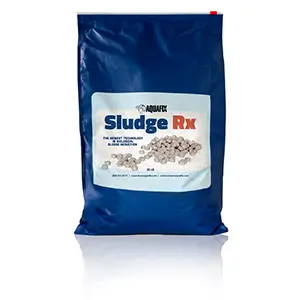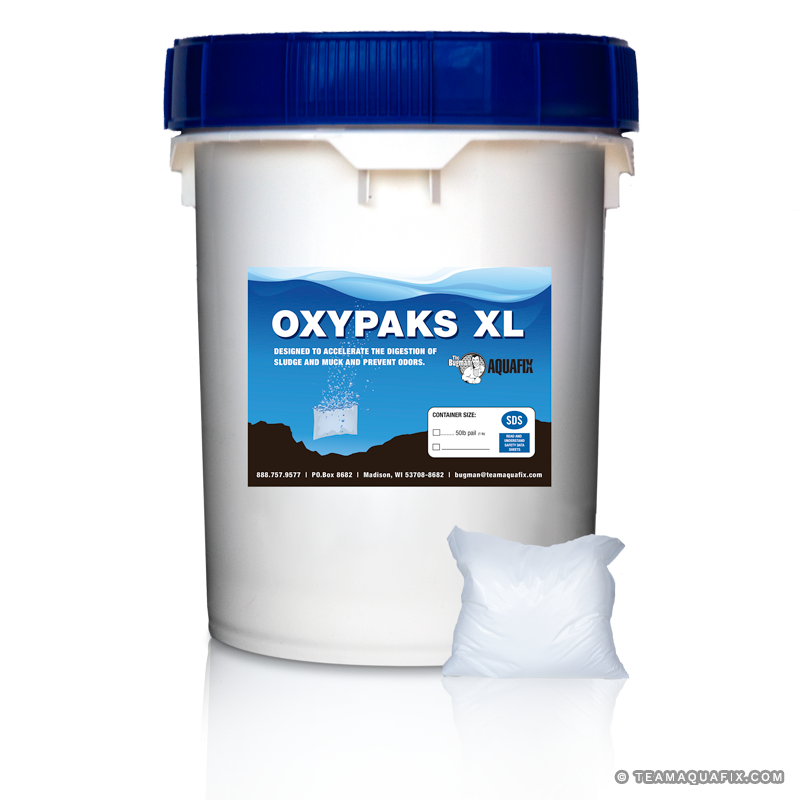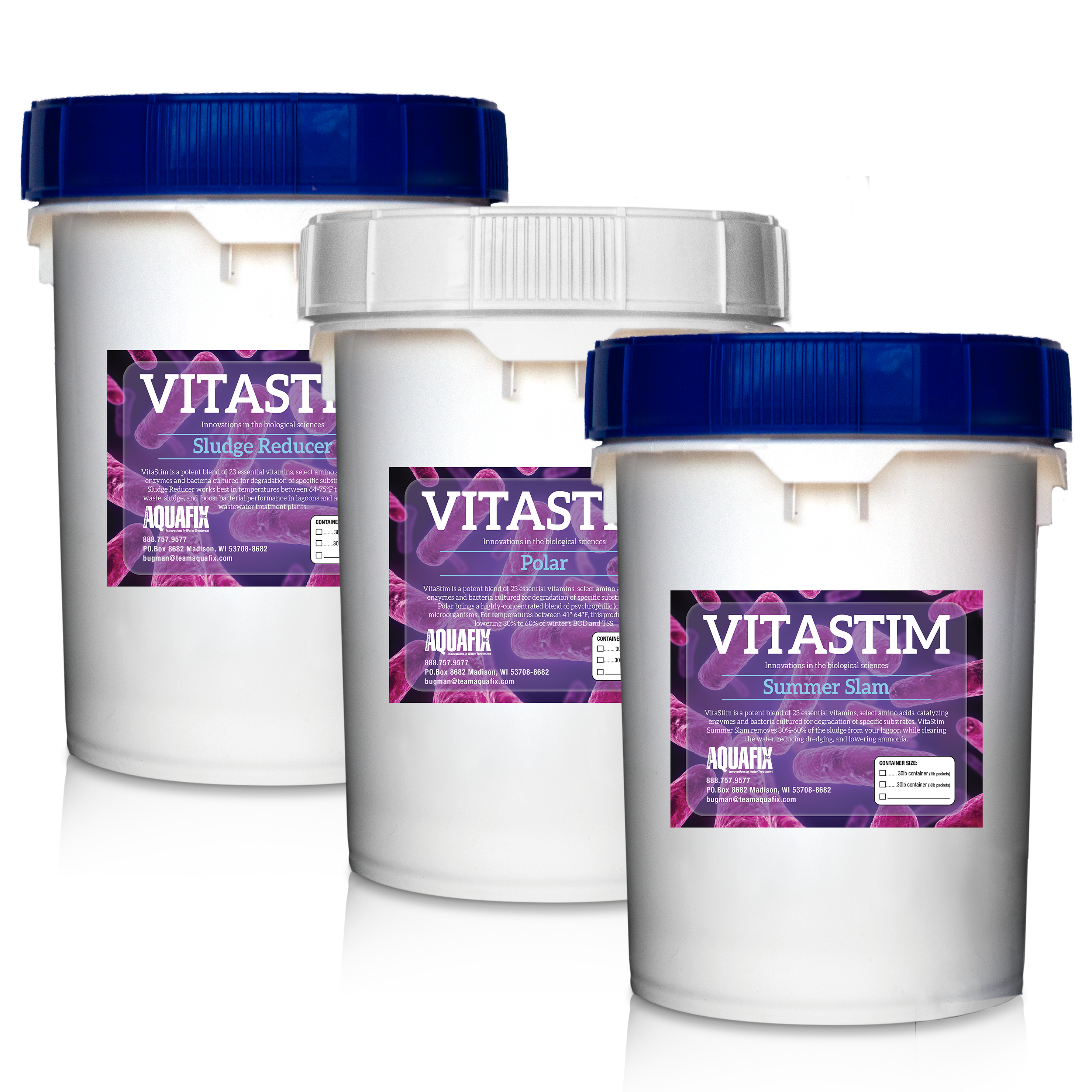Layers of Lagoon Sediment
Oxygen supplementation strategies to maintain lagoon health.
by Deborah Lee, Microbiologist
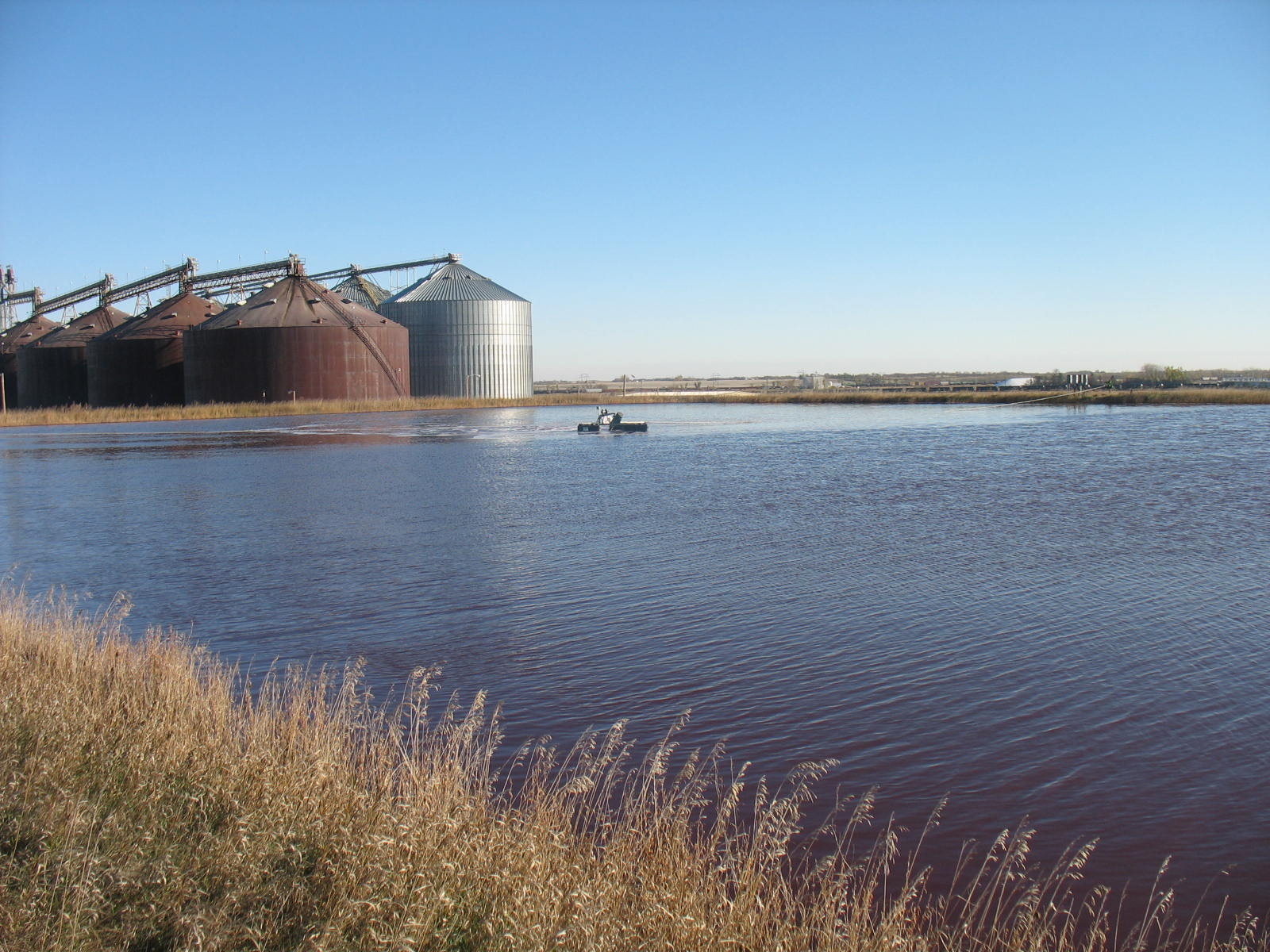
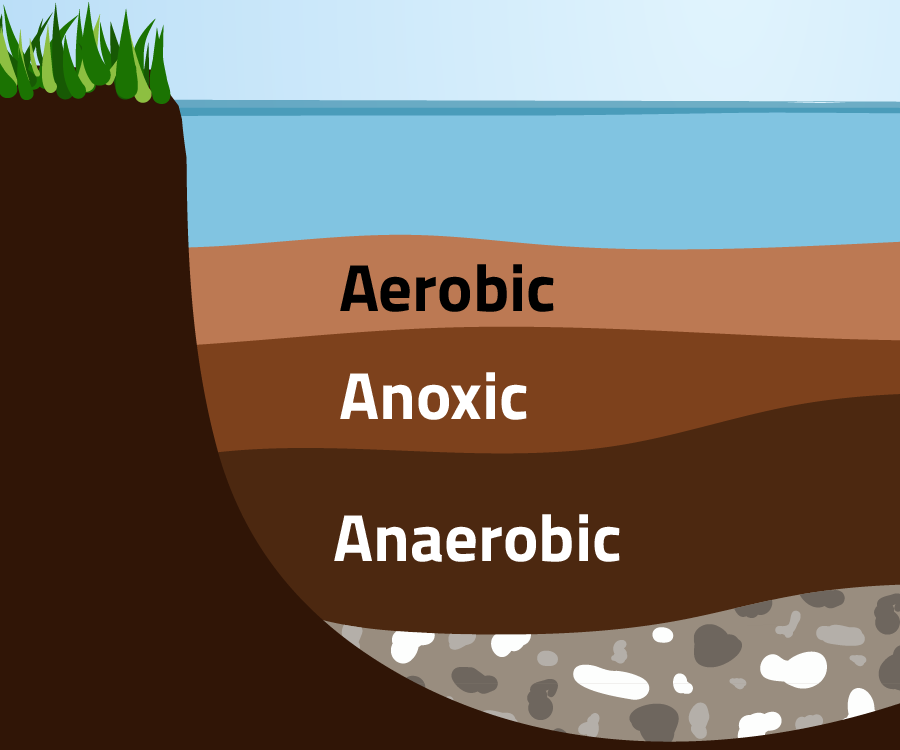
One additive to quickly oxygenate water is to inject liquid oxygen (LOX) into the water column. This is not commonly done due to cost and handling challenges. Other chemicals used include hydrogen peroxide, both liquid and granular forms, and sodium percarbonate. Hydrogen peroxide breaks down to water and oxygen in water and can quickly increase oxygen levels due to high organic matter loads, such as algae die-offs. Sodium percarbonate releases oxygen upon contact with water and can also oxidize some organic matter. Potassium permanganate is a stronger oxidizer that oxidizes organic matter, which indirectly improves dissolved oxygen levels. High concentrations may make the water a pink/purple color. Calcium peroxide can also be used to release oxygen slowly in deep water, although it may cause pH changes.
Mechanical and chemical supplementation of oxygen to a lagoon can keep the microbes in the water column and sediment functioning for a long time; however, eventually, the sediment will need to be removed since microbes cannot degrade the inorganic matter that accumulates.
Lagoon Management Solutions
Sludge Rx
Sludge Rx is a bacterial and biostimulant tablet designed to maximize sludge reduction. These tablets target sludge accumulations to lower effluent TSS, ammonia, phosphate, and improve effluent pH. Use Sludge Rx in lagoons and sludge storage basins to avoid costly dredging.
OxyPaks XL
OxyPaks XL is a granular oxygen source used to accelerate the digestion of sludge and prevent odors in lagoons. The fizzing physical reaction of this product will assimilate oxygen into an otherwise anaerobic biomass.

About the Author
Deborah holds a Master’s Degree in Microbiology and has been leading the Aquafix research on microbial communities and their relationship with nitrogen and ammonia in wastewater since 2009.

